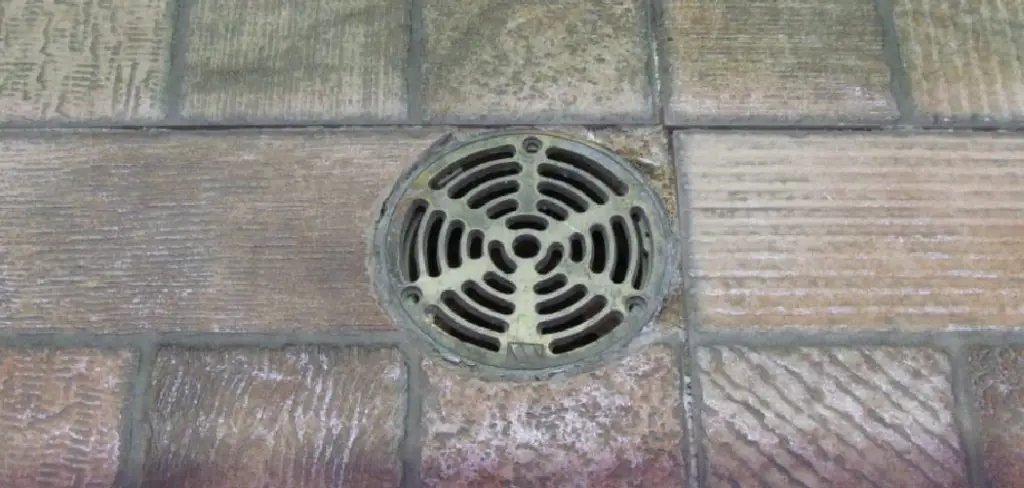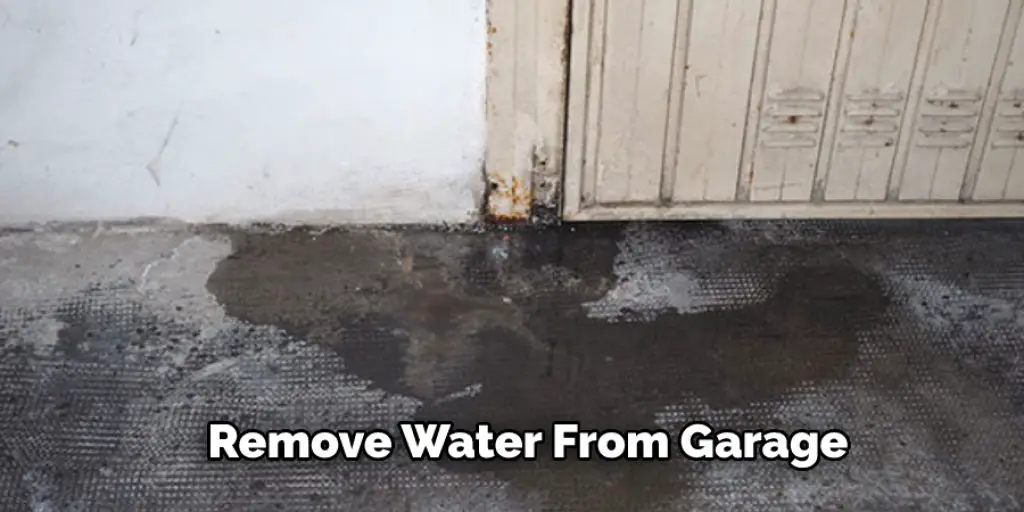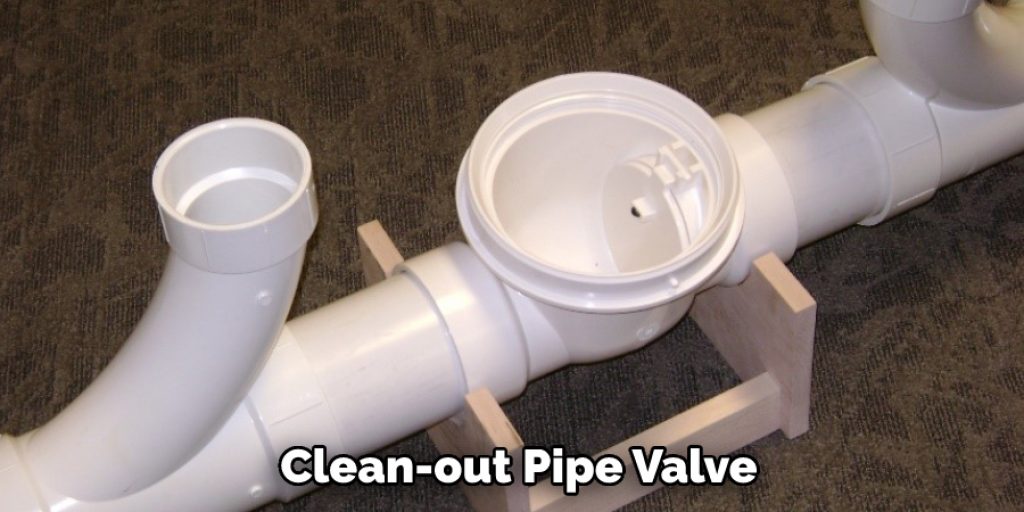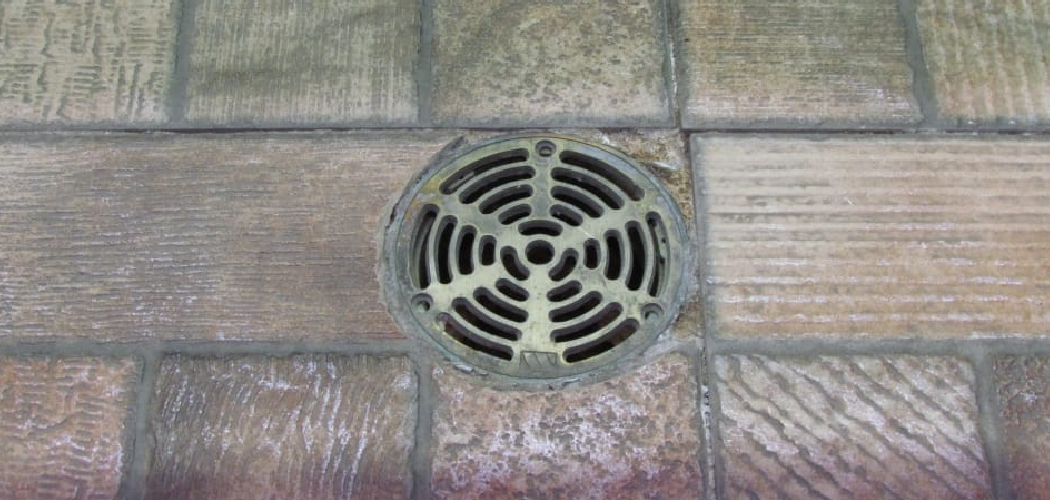If your home has a garage, then there’s a good chance you also have a garage floor drain. This is an important part of your home’s drainage system, and it’s important to keep it clean so that water can flow through it properly. If your garage floor drain becomes clogged, here are a few things on how to unclog garage floor drain.

Why Garage Floor Drain Clog?
Garage floor drains can be a great convenience, allowing you to wash your car or remove snow and ice without making a mess. However, these drains can also become clogged with debris, causing water to back up and flood your garage.
There are a few reasons why garage floor drains might become clogged. The first is that they are often located near the driveway, where leaves, dirt, and other debris can be carried in on your car tires.
In addition, these drains are often used to drain chemicals such as oil and antifreeze, which can build up and block the drain over time. If you have a garage floor drain that is frequently clogged, there are a few things you can do to help prevent it.
Why It’s Important to Unclog the Garage Floor Drain?
A garage floor drain is a great way to keep your garage clean and dry, but it can also be a magnet for dirt, grime, and debris. If the drain becomes clogged, it can cause water to back up onto the floor, creating a slip and fall hazard.
In addition, a clogged drain can also lead to flooding if heavy rains occur. As a result, it’s important to unclog the garage floor drain regularly.
Things You’ll Need
Plunger:
A plunger can be used to help remove clogs in the garage floor drain. Make sure you have a sturdy one that’s designed for heavy duty use.
Baking Soda and Vinegar:
This combination can be an effective way to clean out your garage floor drain. Pour 1/2 cup of baking soda into the drain, followed by 1/2 cup of vinegar. Let it sit for 15 minutes, then pour boiling water down the drain to flush out any remaining debris.

Drain Snake:
A drain snake or auger can be used to physically remove clogs from the garage floor drain. Make sure you have a long enough snake to reach all the way through the pipe.
What Kind of Drain Do You Have?
Standard Floor Drain
This is a drain located on the floor and typically has a grate on top. It is used to remove water from garages, basements, and other areas. If this type of drain becomes clogged, you may be able to clear it by using a plunger.
Trench Drain
A trench drain is a deep, narrow channel designed to carry away large amounts of water. It is usually installed in concrete and can be used in residential and commercial applications.
Sink Drain
A sink drain is the most common type of drain and is easy to unclog. All you need is a plunger.

Common Causes of Clogged Garage Floor Drains
Lack of Maintenance:
One of the most common causes of clogged garage floor drains is lack of maintenance. As a result, drains tend to get clogged with dirt, leaves, and other debris. If not regularly cleaned, this buildup can lead to a blockage.
Weather:
Another common cause of clogged garage floor drains is the weather. Heavy rains or snow can cause water to back up and flow into the drain, resulting in a blockage.
U-Shaped Pipe Trap:
The U-shaped pipe trap is one of the most common causes of clogged garage floor drains. The curve in the pipe creates a water seal that can easily become blocked with debris.
How to Unclog Garage Floor Drain (Standard Garage Drain)
1. Remove the Grate
Most garage floor drains have a grate that can be removed to provide access to the drain. Remove the grate and set it aside. You may need to use a screwdriver or pliers to unscrew any bolts holding the grate in place.
2. Clean Out Debris
Depending on how clogged your drain is, you may need to remove some debris with your hands. Be careful not to touch any of the sludge or gunk in the drain. You can also use a small brush or broom to help loosen and remove debris. It’s important to remove as much debris as possible before attempting to unclog the drain.
3. Insert a Hanger
If debris is blocking the drain, try inserting a hanger into the drain to clear it out. Just make sure the hanger is straight to reach the clog effectively. The hook can help grab and pull out any debris. You can also use a drain snake or auger for tougher clogs.

4. Pour in Liquid Drain Cleaner
Pour a bottle of liquid drain cleaner down the clogged drain. Follow the instructions on the cleaner’s label. Many cleaners recommend letting the chemical work for 30 minutes to an hour before flushing with hot water. The hot water will help dissolve and flush away any remaining debris. The drain should now be unclogged and the water should flow freely.
5. Flush with Hot Water
After the chemical has had time to work, flush the drain with hot water. Pour a pot of boiling water down the drain or use a garden hose to blast the hot water down the drain. The hot water will help dissolve any remaining clogs and push them through the pipe. You may need to repeat this step a few times for tougher clogs.
6. Repeat as Necessary
If the solution and plunger don’t work the first time, it is likely, that they won’t work the second or third time either. In some cases, a clog will require multiple attempts to clear. Be persistent, and don’t give up until the drain flows freely again. It may take a few attempts with different methods to clear the clog.
7. Check Your Work
Once you have finished unclogging the drain, it is important to check your work to ensure that the clog has been removed. Pour a few gallons of water down the drain to ensure that everything is flowing properly. If everything seems to be working correctly, you can safely conclude the job. If not, you may need to try a few of the methods mentioned earlier.
It can be frustrating when your garage floor drain becomes clogged. But with a little bit of effort, you can easily unclog it and get your garage back to normal. By following the steps listed above, you should be able to clear the clog in no time. And if all else fails, you can always call a professional to take care of it.

How to Unclog Garage Floor Drain Snaking the Drain
1. Open the Clean-out Plug
The clean-out plug is located near the garage floor and will have a cap covering it. Remove the cap and use a garden hose to flush out any debris blocking the drain.
2. Insert the Snake
If the flushing doesn’t clear the drain, insert a snake into the opening. The snake is a long, metal tube with a spiral head on one end that can be purchased at most hardware stores. Guide the snake down the drain and turn it as you go to help break up any clogs.
3. Turn the Snake
Once the drainage is clear, slowly turn the snake in the opposite direction of the flow. Doing this will help remove any remaining clogs and debris from the drain. Be sure to keep an eye on the snake as you turn it in case it gets stuck. If it does, stop turning immediately and proceed to step four.4.l
4. Pull It Out
If the clog is close to the drain, you should be able to dislodge it by pulling on it. Reach down into the drain and try to grab the clog. If you can, pull it out and dispose of it properly.
If the snake becomes stuck, you will need to pull it out. To do this, slowly back the snake out while keeping an eye on the drainage. If the clog is still there, you will need to go back to step three and try again.
5. Move on to the Clean-out Pipe Valve
If the clog is too far down the drain for you to reach, it’s time to move on to the clean-out pipe valve. This is a valve located at the end of the drain that allows you to clear the line without removing the entire pipe.
To clear the clog, turn the valve until it’s in line with the pipe. Doing this will allow you to pour water down the drain and help clear the clog. Be sure to have a bucket or container ready to catch the water as it comes out. Once the clog is cleared, turn the valve back to its original position.
6. Flush with Hot Water
Pour a pot of boiling water down the drain to help dissolve whatever is causing the clog. Be sure to use caution when handling hot water and avoid contact with your skin. Pour slowly so the water has time to work its way down the drain. If the clog persists, move on to the next step.
7. Replace the Plug
Once the clog has been removed, replace the plug. If the clog is not too severe, this should take care of the problem. If it is a more serious issue, you may need to call a professional.
8. Follow-up Flush
After replacing the plug, flush the drain with hot water. This will help remove any remaining debris and take care of the problem.
Now that you know how to unclog garage floor drain, you can take care of the problem yourself. If the clog is not too severe, the tips listed above should be taken care of. But if it is more serious, you may need to call a professional. They will be able to diagnose the issue and take care of it for you.
How Do You Unclog a Concrete Floor Drain
There are several ways to unclog a concrete floor drain. One way is to use a plunger. First, make sure that enough water is in the drain to cover the plunger. Insert the plunger into the drain and push and pull it up and down. This will create suction that can help to loosen the clog. Another way to unclog a concrete floor drain is to use a plumber’s snake.
This is a long, flexible piece of equipment that can be inserted into the drain to reach the clog. Once the clog has been located, the snake can be used to break it up and clear it out of the drain. If neither of these methods works, you may need to call a plumber to clear the clog.
How Do You Unclog a Main Drain
One of the most common plumbing problems is a blocked main drain. This can be caused by a buildup of soap scum, hair, grease, or even tree roots. Trying to unblock a drain can be messy and frustrating, so it’s usually best to call a professional. However, if you’re feeling brave, there are a few things you can try.
First, pour boiling water down the drain to melt any grease causing the blockage. Next, use a plunger to try and break up the blockage. If neither of these methods works, you’ll need to remove the drain cover and use a plumber’s snake to clear the blockage. Once you’ve managed to unblock the drain, keep it clear by regularly pouring hot water down it.
Why Is My Floor Drain Backing Up?
One of the most common plumbing problems is a backed-up floor drain. There are a few reasons why this might happen, but the most likely culprit is a blockage in the drain pipe. This can be caused by anything from soap and hair buildup to objects that have fallen into the drain.
In some cases, the blockage may be located further down the pipe, in which case you’ll need to call a plumber to clear it. However, if the blockage is close to the floor drain, you may be able to clear it yourself using a plunger or an auger.
Once you’ve cleared the blockage, be sure to take steps to prevent it from happening again, such as using a drain screen or regularly cleaning the drain. Keep reading for more information about how to unclog garage floor drain.
Frequently Asked Question
Should a Garage Floor Have a Drain?
Yes, a garage floor should have a drain. If your garage floods, the water will damage your car and the items in your garage. A floor drain will help to prevent this from happening. You can also use the drain to wash your car or clean out your garage. If your garage does not have a drain, you may want to consider installing one.
Why Is There a Hole on My Garage Floor?
There may be a hole in your garage floor because of a clogged garage floor drain. If this is the case, you will need to unclog the drain to fix the problem. One way to do this is by using a plunger. Put the plunger over the drain and plunge it up and down several times. The suction should help to loosen and remove the clog. If this does not work, you may need to use a plumber’s snake or call a professional.
Where Do Most Garage Floor Drains Go?
Most garage floor drains go into a sewer line, but some connect to a septic tank. Call a plumber to unclog it if your floor drain goes into a sewer line. If your floor drain goes into a septic tank, you will need to use a plunger to try to clear the clog. It’s important to regularly maintain your septic tank to prevent clogs and backups. Additionally, you can also use enzymatic drain cleaners specifically designed for septic tanks to help keep the drain clear. It’s also important to be mindful of what you pour down the drain, avoiding harsh chemicals and oils that can cause buildup and clogs.
How Do You Flush a Floor Drain?
There are a few different ways that you can flush a floor drain. One way is to pour hot water down the drain. You can also pour vinegar or baking soda down the drain. These natural cleaning agents can help to break up any buildup and remove odors. Another option is to use a commercial drain cleaner, but be sure to follow the instructions carefully and avoid using it if you have a septic tank.
Conclusion
If you have a garage, it’s likely that at some point, you will need to unclog the floor drain. This is an easy process that can be done with a few simple tools. Follow these steps on how to unclog garage floor drain and get rid of any standing water.
You Can Check It Out To Build a Wooden Garage Door
I am Rick. I grew up helping my dad with his handyman service. I learned a lot from him about how to fix things, and also about how to work hard and take care of business. These days, I’m still into fixing things- only now, I’m doing it for a living.
I’m always looking for new ways to help people grow and develop. That’s why I have created this blog to share all my experience and knowledge so
that I can help people who are interested in DIY repair.

